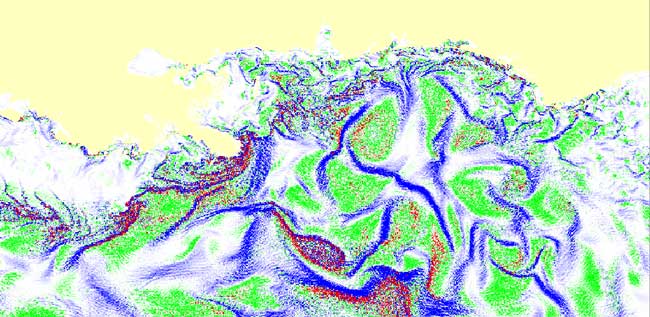Engineer Predicted Deepwater Horizon's Oil Slick Spread

As the Deepwater Horizon oil spill unfolded earlier this summer, a mechanical engineer helped cleanup crews keep up with the moving target by developing a steady stream of forecasts that predicted where the oil slick would spread several days in advance.
The engineer's three-day forecasts successfully showed where and when oil would wash ashore in the Mississippi River Delta locations of Plaquemines Parish and Grand Isle, La., as well as on the white-sand beaches of Pensacola, Fla., according to an analysis of the forecasts reported Thursday. They also predicted the flow of oil toward Panama City Beach, Fla., in June.
Aerial surveys showed the predictions had proven accurate to within a couple of miles. The forecasting model also suggested the oil spill could have eventually reached 80 percent of the Gulf of Mexico, if not for containment or evaporation.
"We were on the phone with people, several days in advance, telling them where the oil was going to go," said Igor Mezic, a professor of mechanical engineering at the University of California, Santa Barbara, who designed the model.
Mezic and colleagues issued frequent forecasts in the weeks following the April 20 explosion aboard the Deepwater Horizon rig. But they first had to figure out an accurate way of predicting how an oil slick moves across the heaving ocean.
Complications typically arise because of the constant wave motion at the surface driven by wind, Mezic said.
The new approach used computations that simulated how oil slicks get stretched into long filaments by the motion of the sea surface. It also included forecasts of sea-surface conditions from a U.S. Navy model.
Get the world’s most fascinating discoveries delivered straight to your inbox.
"I looked at this problem on the TV and thought I could do something about it," Mezic explained. "I felt there could be a better set of theories to predict how oil will move."
More improvements on the new model could allow researchers to forecast the spread of other contaminants, such as ash from an erupting volcano or even warm air that gets into a climate-controlled building.
"It's pretty universal," Mezic said. "It could be applied to many different kinds of situations where a contaminant or heat is moved around by a liquid or gas."
The study is detailed in the Sept. 2 issue of the journal Science.
- Top 10 Greatest Explosions Ever
- Disaster Laws: Will Gulf Oil Spill Change Anything?
- The Worst Petroleum Disasters Ever



